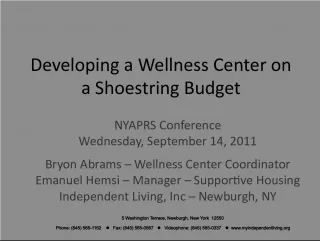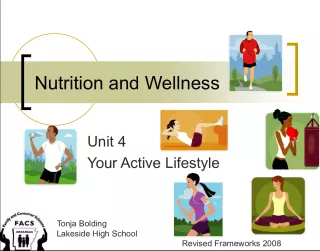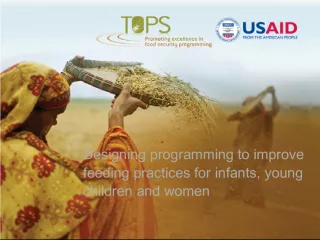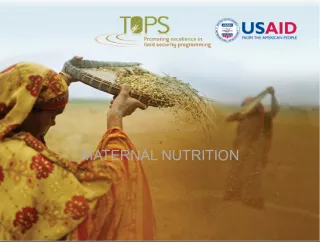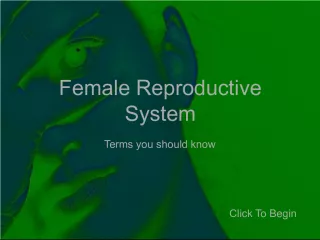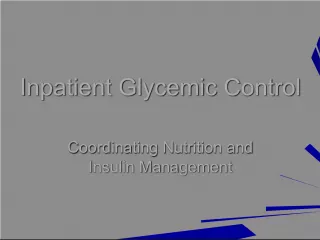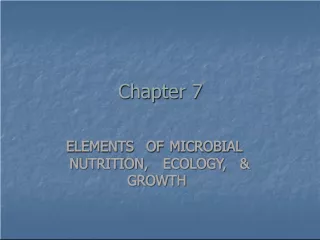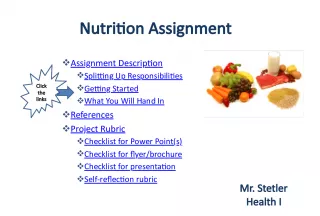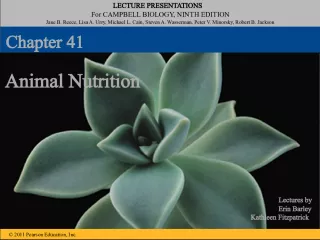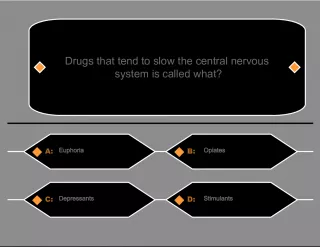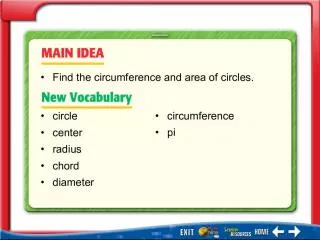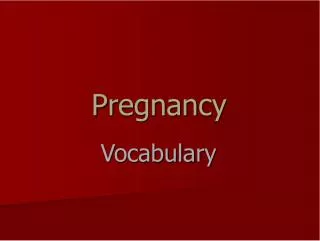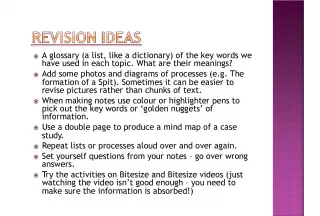Nutrition and Wellness: Understanding Wellness and Related Terms


This unit focuses on understanding the concept of wellness and its related terms. The first lesson covers the definition of wellness, which is a combined state of physical, psychological, emotional, and
- Uploaded on | 2 Views
-
 fabio
fabio
About Nutrition and Wellness: Understanding Wellness and Related Terms
PowerPoint presentation about 'Nutrition and Wellness: Understanding Wellness and Related Terms'. This presentation describes the topic on This unit focuses on understanding the concept of wellness and its related terms. The first lesson covers the definition of wellness, which is a combined state of physical, psychological, emotional, and. The key topics included in this slideshow are . Download this presentation absolutely free.
Presentation Transcript
Slide1Nutrition and WellnessUnit 1 Nutrition, Wellness and You Tonja Bolding Lakeside High School Revised frameworks 2008
Slide21.1 Match terms related to wellness1. culture – everything about the way a group of people lives 2. emotional health – the overall condition of a person’s emotions 3. health - combined state of physical, psychological, emotional, and social well being 4. lifestyle – everything about the way one person, a couple, or a family choose to live 5. nutrition - the study of nutrients and how they are used by the body
Slide36. organic food –a food produced without the use of synthetic fertilizers, pesticides or growth hormones 7. physical health – the overall condition of a person’s body 8. psychological health –the overall condition of a person’s attitude 9. social health – the overall condition of a person’s ability to relate to others around them 10. technology - the application of scientific knowledge for practical purposes such as reaching goals, meeting needs, and solving problems 11. wellness – the process of acquiring and maintaining physical, mental, emotional, and social health
Slide41.2 Identify the aspects of wellness (the process of acquiring and maintaining physical, mental, emotional, and social health) Signs of good physical health (the overall condition of a person’s body) include: Bright, clear eyes Firm skin Healthy teeth and gums Good muscle tone Good posture Energy for daily living Normal growth rate Resistance to illness Ability to relax and sleep
Slide5Activity for Physical Health Describe particular behaviors that lead to good physical health Chart on board…identify how many you practice. 1.2.1 Analyze the importance of each aspect of wellness
Slide6Psychological health (the overall condition of a person’s attitudes) consists of: Ability to cope with change The way a person faces their problems Ability to work toward goals Open-mindedness Self-confident
Slide7The Mind is a Powerful ToolActivity for Mental Health: Write a description of a person with good mental health. Be prepared to read your description out loud. Think of someone you know well who demonstrates most or all of these characteristics. Be prepared to tell about this person if called on to share. 1.2.1 Analyze the importance of each aspect of wellness
Slide8Emotional health (the overall condition of a person’s emotions) consists of: How you deal with daily life How you feel about yourself Sensitivity to others The ability to handle anger, frustration and disappointment
Slide9Activity for Emotional Health Brainstorm a list of techniques that you would suggest to a friend to encourage positive emotional health. Be prepared to share you list 1.2.1 Analyze the importance of each aspect of wellness
Slide10Social health (the overall condition of a person’s ability to relate to others around them) involves: Your relationship with others Your ability to give and accept praise You ability to be helpful and considerate Accepting rules and responsibilities Dealing with conflict in a constructive way Handling peer pressure without compromising your values
Slide11Outlooks on LifeActivity for Social Health Think of a familiar quotation that presents an outlook on life…such as…”For success, attitude is as important as ability.” Write down …if you can’t think of one, compose your own!!! Share with class and agree or disagree with quotation 1.2.1 Analyze the importance of each aspect of wellness
Slide12Physical healthPsychological health Social health Emotional health Wellness All the aspects of wellness are interrelated
Slide131.3 Evaluate the effect of lifestyle (everything about the way one person, a couple, or a family choose to live) choices on wellne ss Positive Lifestyle Choices healthy diet rich in vital nutrients 8-9 hours of sleep nightly maintaining a healthy weight regular doctors visits active lifestyle exercise physical activity educate yourself about nutrition (the study of nutrients and how they are used by the body)
Slide14Negative Lifestyle Choices smoking drugs lack of sleep poor nutrition excess weight inadequate health care poor time management stress
Slide15Activity: Choices Can Make You or Break You high blood pressure lung cancer osteoporosis anemia stress diabetes AIDS/STDs liver cancer skin cancer depression paranoia heart attack With the help of the people at your table: Identify the lifestyle choice that causes the following conditions. Some may have more than one answer. Be prepared to discuss. 1.3.3 Chart lifestyle choices that contribute to disease
Slide161.4 Examine wellness as a choice Changing ones behavior can affect all aspects of your health (combined state of physical, psychological, emotional, and social well being) Eating breakfast can help you concentrate in school. physical health affects psychological health. =
Slide17 Choices that Promote Wellness Ask yourself the following questions: Do I: avoid the use of tobacco? avoid the use of alcohol and illegal drugs? eat a nutritious daily diet including breakfast? manage my weight? get daily physical activity to maintain fitness? manage stress effectively? get enough sleep? avoid unnecessary risks? avoid unsafe sexual practices? take precautions when using equipment and machinery? enthusiastically participate in school and community activities?
Slide19Activity: Healthy Choices Bracelet Use a clear bead for every colored bead you are unable to place as a reminder that YOU can choose to improve your health. Add a dark blue bead if you get at least 8 hours of sleep a night. Add a purple bead if you exercise at least 5 times a week. Add a aqua blue bead if you drink 64 oz of water a day. Add an orange bead if you eat at least 2 cups of fruit a day. Add a green bead if you eat at least 2 ½ cups of vegetables a day. Add a white bead if you brush your teeth twice a day. Add a gray bead if you eat breakfast every day. Add a yellow bead if you eat lunch every day. Add a red bead if you shower every day. Add a black bead if you are a non smoker. Add a tan bead if you do not tan. 1.4.1 Demonstrate wellness as a personal choice
Slide20Activity:Using continuum, line up where you think your present lifestyle places you. Move to where you would like to be. Evaluate what changes would need to make.
Slide211.5 list the steps in the decision making process Practicing wellness can affect you positively today and into the future. Using the decision making process can help you make choices for your overall wellness and other aspects of your life. 1. Identify the decision to be made. 2. Identify available resources and possible options. 3. Weigh pros and cons of each option. 4. Select the best option 5. Act on the decision 6. Evaluate the results of the decision
Slide22Activity: FCCLA Power of One A Better You Module 1.5.2 Develop an FCCLA Power of One project: A Better You Module
Slide23Cultural The food people serve for meals are influenced by their culture (everything about the way a group of people lives) which includes the beliefs, values and behaviors shared by the group. Culture changes over time as new ideas are introduced. People in the U.S. are now more health conscience and tend to spend more money on low fat foods for example. 1.6 Compare the impact of cultural, emotional, psychological, and social influences on food choices
Slide24Emotional Emotions can cause under eating and over eating. Food can satisfy emotional needs Babies learn to connect food with warmth and security Children associate foods with pleasurable experiences Adults associate food with times of happiness and security
Slide25Psychological Food appeals to the senses of sight, taste, and smell Preparing food can be as satisfying as eating it.
Slide26Social Food brings people together. Preparing and eating food are social activities. Family has a great impact on the foods people eat and how they eat them. Friends have an affect on the foods you choose. The media can affect your food choices.
Slide271.7 Examine the development of regional foodsfrom available global and local food supplies Each region of the US features some distinctive types of foods. These regions reflect different ethnic heritages and each heritage has different foods. The Southwest has a large Mexican-American population which provides foods like tacos, tortillas and tamales. Many Asian people settled along the Pacific Coast and contributed rice dishes and stir-fry cooking methods. Foods supplies are influenced by the demands of the area.
Slide28See “What the World Eats”- PowerPoint
Slide291.8 identify ways global food choices are interrelated by supply, production, and distribution worldwide The local food supply is affected by what can be grown locally which is affected by the climate. Foods produced in one place can become part of the cuisine elsewhere. Bananas which originated in Malaysia are grown in Central America and imported to the U.S. Cost of fuel, natural disasters, political conflicts, etc. can affect the distribution of food items
Slide301.9 research government guidelines for health claims concerning wellness issues The Food and Drug Administration ensures the safety of all foods sold except meat, poultry, seafood, and eggs. They: set regulations on issues such as food additives and pesticides used in the growing of the food sets standards for consumer information such as food labels regulates nutrient claims such as “low fat” or “more calcium” regulates health claims such as “reduces the risk of cancer health claims must be based on scientific evidence
Slide31Add these!!! USDA EPA
Slide321.10 Summarize the roles of the food industry, technology (the application of scientific knowledge for practical purposes such as reaching goals, meeting needs, and solving problems) and government influences in food choices Food Industry Economics has a lot to do with the availability of food. supply and demand affects the cost of the food
Slide33 Technology affects food production. Organic foods (a food produced without the use of synthetic fertilizers, pesticides, or growth hormones) are readily available no scientific evidence they are more nutritious or safer consumers pay more Hydroponics is a method of growing vegetables indoors in nutrient-rich solution rather than soil. Fish farming allows for areas of the ocean to be sections off for easy harvest and greater yields of seafood. The ability to grow crops that are pest resistant.
Slide34Government agencies monitor the safety of foods. FDA USDA
